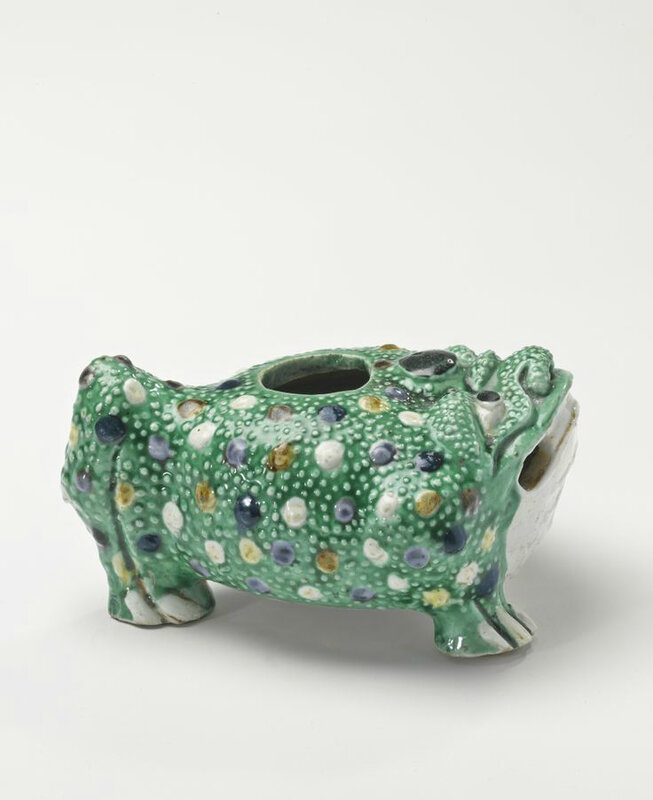A susancai toad-form water dropper, Qing dynasty, Kangxi period (1662-1722)

A susancai toad-form water dropper, Qing dynasty, Kangxi period (1662-1722). Length 6 1/2 in., 16.6 cm. Photo Sotheby's
Provenance: Berwald Oriental Art, London, 2000.
Note: The lowly toad has long occupied a significant role in Chinese iconography. A very well modeled pottery toad in the Luoyang museum dating back to the Xia dynasty (2070-1600 BC) attests to both the longevity and popularity of the animal. The toad’s association with water and darkness somehow evolves to the animal’s influence over rain and pareidolic appearance on the moon. As there are no early texts describing this evolution it is impossible to know how or when the toad became associated with the moon. William R. Sargent comments in The Copeland Collection, Salem, 1991, p. 28, on physical similarities such as the animal’s round, plump form and bumpy surface as providing the impetus for the anthropomorphic transference to the moon.
By the Ming dynasty the figure had been further refined to a three-legged toad, a mythical figure who swallows the moon during an eclipse and whose remoteness translates into a wish for the unattainable which soon becomes connected with aspirations for wealth. By the seventeenth century the toad has been appropriated into the mythology of the immortal Liu Hai. The deity keeps close rein on the toad which has acquired the ability to spew out golden coins.
Sotheby's. Embracing Classic Chinese Culture: Kangxi Porcelain from the Jie Rui Tang Collection, New York, 14 march 2014

/https%3A%2F%2Fprofilepics.canalblog.com%2Fprofilepics%2F1%2F0%2F100183.jpg)
/https%3A%2F%2Fstorage.canalblog.com%2F03%2F02%2F119589%2F96711876_o.jpg)
/https%3A%2F%2Fstorage.canalblog.com%2F11%2F31%2F119589%2F94773502_o.jpg)
/https%3A%2F%2Fstorage.canalblog.com%2F20%2F83%2F119589%2F94772815_o.jpg)
/https%3A%2F%2Fstorage.canalblog.com%2F26%2F72%2F119589%2F75604929_o.jpg)
/https%3A%2F%2Fstorage.canalblog.com%2F59%2F60%2F119589%2F26458628_o.jpg)


/http%3A%2F%2Fstorage.canalblog.com%2F76%2F61%2F119589%2F118867846_o.jpg)
/http%3A%2F%2Fstorage.canalblog.com%2F83%2F36%2F577050%2F39211685_p.jpg)
/http%3A%2F%2Fstorage.canalblog.com%2F71%2F91%2F119589%2F30056120_o.jpg)
/image%2F1371349%2F20240423%2Fob_af8bb4_telechargement-6.jpg)